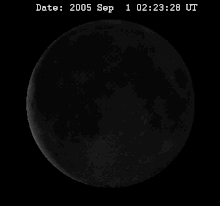Tip of the moment...
 How to review user contributions
To see a list of a user's contributions, go to their user page or user talk page. When you do that, the menu item "User contributions" will appear in the Toolbox menu on the sidebar. This link will show you all the edits that user has ever made (except deleted edits), up to 500 per page. This is useful for tracking vandalism in progress. Edits with a "top" link are the most recent ones to their respective articles. You have your own contributions list, which is particularly useful for tracking your conversations on talk pages. If you are logged in, you can access the list from the "Contributions" link at the top of the page. To help keep track of your discussions on talk pages, you may wish to place the {{Discussion tracker}} template to your talk page. – – Read more: To add this auto-randomizing template to your user page, use {{totd-random}}
|
- Tomorrow's FA (Featured Article)
The giant anteater is a large insectivorous mammal native to Central and South America. It is one of four living species of anteater and is classified with sloths in the order Pilosa. This species is mostly terrestrial, in contrast to other living anteaters, which are arboreal or semi-arboreal. It is the largest of its family, stretching 182–217 cm (5.97–7.12 ft) and weighing 33–41 kg (73–90 lb) for males and 27–39 kg (60–86 lb) for females. It is recognizable by its elongated snout, bushy tail, long foreclaws and distinctively colored pelage. The anteater's habitats include grassland and rainforest and it feeds primarily on ants and termites, using its foreclaws to dig them up and its long, sticky tongue to collect them. The giant anteater is listed as vulnerable by the International Union for Conservation of Nature. Threats to its survival include habitat destruction and hunting. The anteater has been featured in pre-Columbian myths and folktales, and modern popular culture. (Full article...)
(Don't panic if the above item is in red.)
... ctd.
(not really, but I like the gif)
(another neat gif)
|
... so see US firearm deaths, {US} angry White man and
|
If some of the above tickle you, do check out these: User:Ira_Leviton#About_me_via_userboxes - bravo Ira :)

How is Wikipedia considered, externally?
* * * Did you know that you can support Wikipedia, by becoming a fan of its Facebook Group? * * *
| External aspects of Wikipedia. Hit 'show' to present a drop-down list ---> | |
|---|---|
|
"Wikipedia better than Britannica", claims experienced dictionary-writer. Good ol' Beeb. Several sections of the BBC have a policy of using Wikipedia unashamedly (good on them). BBC article March 2009: "UK politicians' Wikipedia worries" is largely pro-Wikipedia, despite its title. BBC article 2007: "Students 'should use Wikipedia'" it says, partially quoting Jimmy Wales. Some BBC articles rely heavily on directing readers to WP, e.g. this article on WW2 code-breaking. The Electoral Reform Society (ERS) (here) directs viewers to Wikipedia's Counting Single Transferable Votes article. The Daily Telegraph's on-line website section provides an RSS feed from Wikipedia (here), above its own Technology RSSs, but ironically still propagates old anti-Wikipedia stories (here) ! BBC article 2005: [1] The results of an analysis of a broad range of entries from the websites of Wikipedia and Encyclopædia Britannica] states that "... reviewers also found many factual errors, omissions or misleading statements: 162 and 123 in Wikipedia and Britannica, respectively.". But we've improved since then, I'm quite sure. Re. spam: http://rushprnews.com/2010/03/31/pr-consultants-should-think-twice-before-using-wikipedia-to-promote-clients How big is Wikipedia? This big! See also Wikipedia:Statistics. As of today, Friday, April 4, 2025, English Wikipedia has 6,976,502 articles. Wikipedia has an "External peer review" page: Wikipedia:External_peer_review. Quotes from people that have made comments about Wikipedia as a whole can be found at Wikipedia:Testimonials and Wikipedia:Criticisms. See also Category:Critics of Wikipedia. See also Wikipedia:Press coverage 2010. |
Favourite articles etc.

Just a reminder to myself of what I rate as Good articles etc.
| My favourite articles | ||
|---|---|---|
|
 This Wikipedian recites the Wiki Prayer regularly. | God, grant me the serenity to accept the pages I cannot edit, The courage to edit the pages I can, And the wisdom to know the difference. |
See also
| Assorted snippets, hints & tips |
|---|
|
Click here. |
Self-reminders
| Things done / to do | ||
|---|---|---|
|
See web-browsers & mIRC chat, for double-spacing etc. |
Read, get & use user:chzz/help. |
Read about using freenode Correct any misused templates, finding them by a search of WP Mainspace articles, like this. |
Ongoing

When the Moon is closest, it is at perigee, and it looks slightly bigger from Earth. Perigee is the point at which an object makes its closest approach to the Earth. Often the term is used in a broader sense to define the point in an orbit where an orbiting body is closest to the body it orbits. The opposite is the apogee, the farthest or highest point.
Vandal-patrolling.
Help out with pages which need copy-edit.
Most-wanted articles - some 'missing" articles are still linked 140 times!
Help with Requests for feedback, as & when I get time.
Added {{Portal box|Law}} * In re & {{Clear}} to these "In re" articles.












